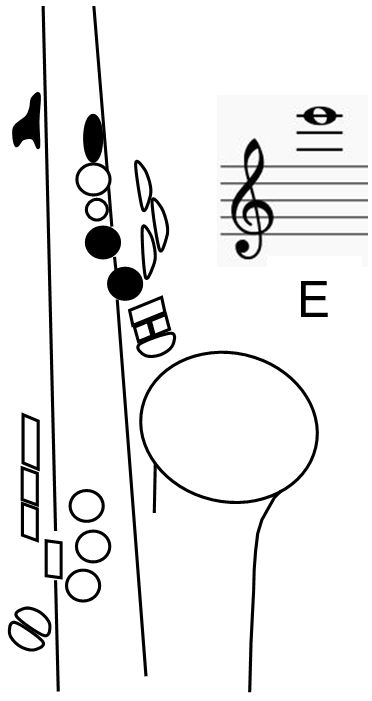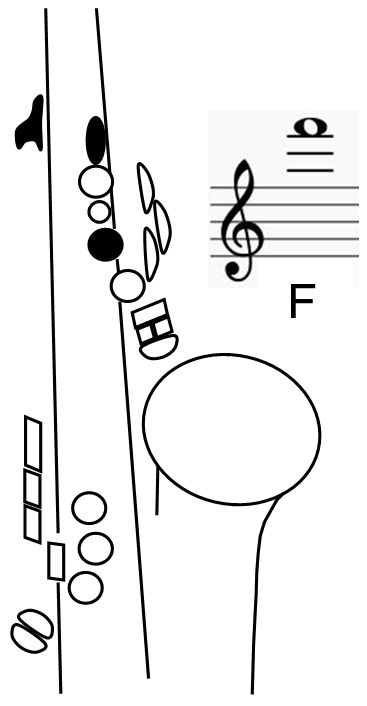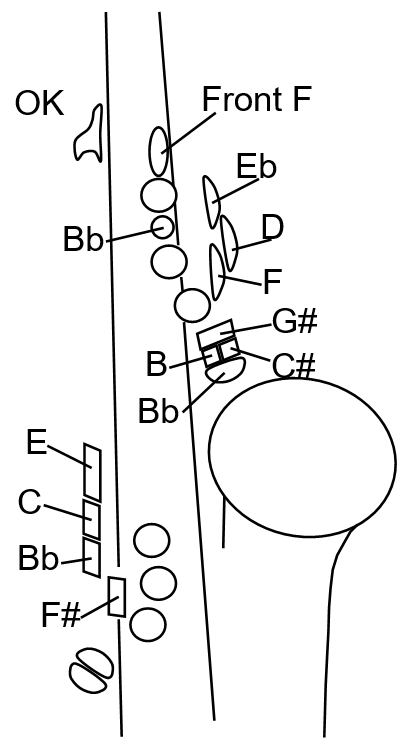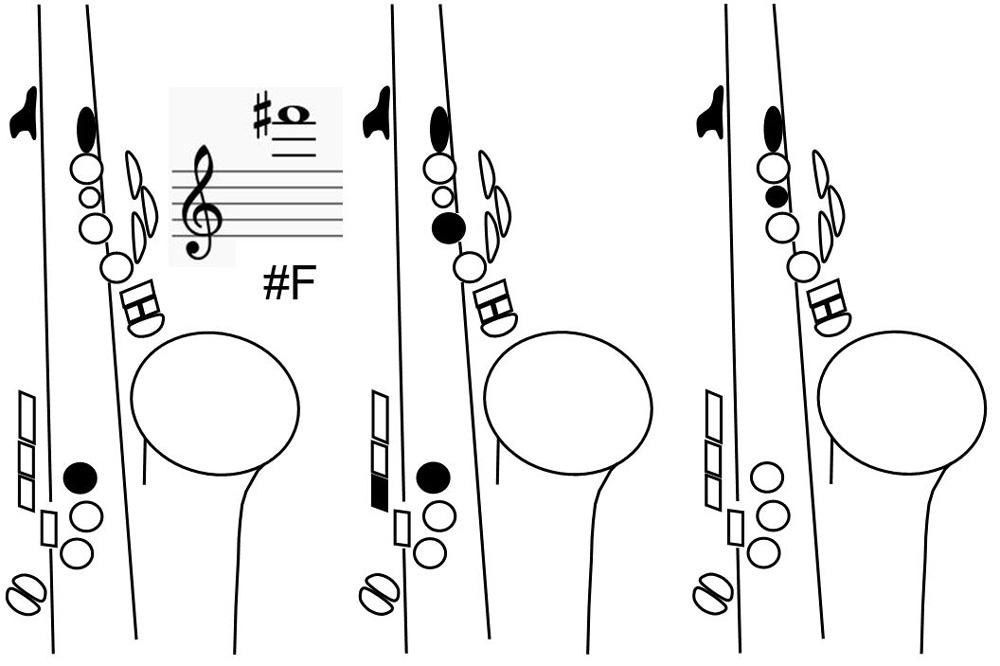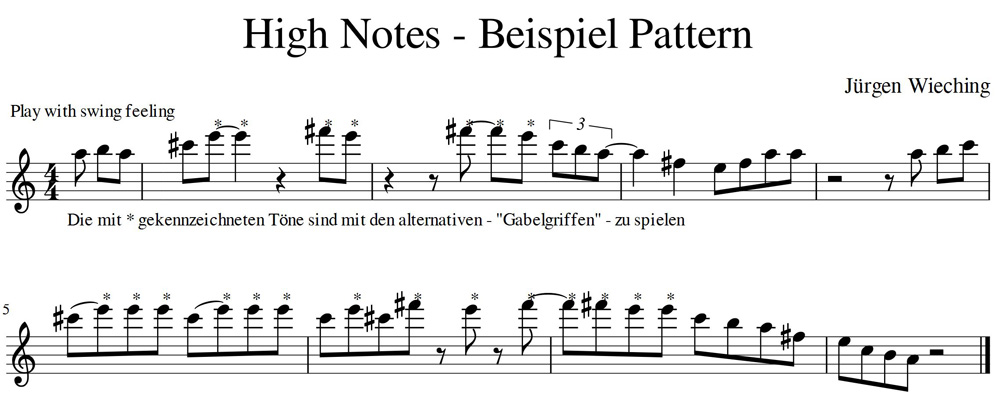The old overtones
In the introduction of this saxophone workshop's last edition, I mentioned the topic of overtones in the issue of „High Notes“. The safe mastery of overtones is an essential requirement for playing High Notes or the so-called “flageolet“ or “Altissimo“ register. Important aspects for the successful practice of overtones are:
1. The lipping Lipping has to be very firm but not too “dogged“ - if the reed seals the mouthpiece so that no air can flow past it, no tone can be produced either (not even a very high one).
2. The oral cavity as a resonance space This is easy to understand when you watch how the tongue changes the oral cavity when whistling high tones with the lips. Same can be remarked when whistling with the fingers when the pitch is changed.
3. An equally well-supported air flow with an open and relaxed neck or rather larynx. Theoretically, all the High Notes can be produced as overtones of notes of the normal saxophone register. Nonetheless, I think that's complicated and confusing because it definitely requires a very safe handling of all the overtones. Besides that, it is not very convenient to always change the played register during the play when High Notes are played as overtones of low notes.
The new fingering
So there have to be fingerings which allow a safe, secure „locking“ of the High Notes and which are still constructed in a way that they enable a smooth flow when playing. I already mentioned in the beginning of this workshop that these fingerings exist for High Notes on the saxophone – they even exist in different variations because not all of the fingerings work in the same way on every instrument. As an introduction of new fingerings for the Top Tones above the played „F#“ in the third octave, I will first present some alternative fingerings for the notes E"˜"˜"˜, F"˜"˜"˜ and F#"˜"˜"˜. These new fingerings already show the principle of the fingerings for High Notes. Also do they convey the changed sound character and the lipping feeling of the high notes. The alternative fingerings can be used from E"˜"˜"˜ upwards. They are played with the so-called „Front F“ button and the left index, which slides upwards from the „B“ button. Due to the resulting braced position of the left index, they are also called „fork fingering“.
Fork fingering
To practice fork fingering, the following exercises are great. They should be played slowly, both, portato and legato. Look for a nice, stable tone and a clean intonation. Support the tones with the alternative fingerings through the oral cavity as a resonance space – exactly like in the overtone exercises!
High Notes – practicing exercise – F#'''
High Notes exercise – combination of tones Once you're familiar with the new fingering, you can practice the combination of the new tones with the following exercise. I noted them with a legato bow but also try to play the exercises portato. In this practice, you also have to look for a nice, regular tone and an accurate intonation.
Finally, I give you an example of how to integrate the high register in a solo. Use the new „fork fingering“ . You will find out that the sound of these fingerings goes very well with the character of the music. The notation of this piece has the sound material of an A-Blues scale as base. With a tenor saxophone, you can play this example with a Blues or a Rhythm'n'Blues piece in a sounding “G“ and with the alto saxophone in a sounding “C“. Have fun with these basic exercises for the fingerings of high notes. In the upcoming episode, I'll present further fingerings and exercises for the highest notes.


